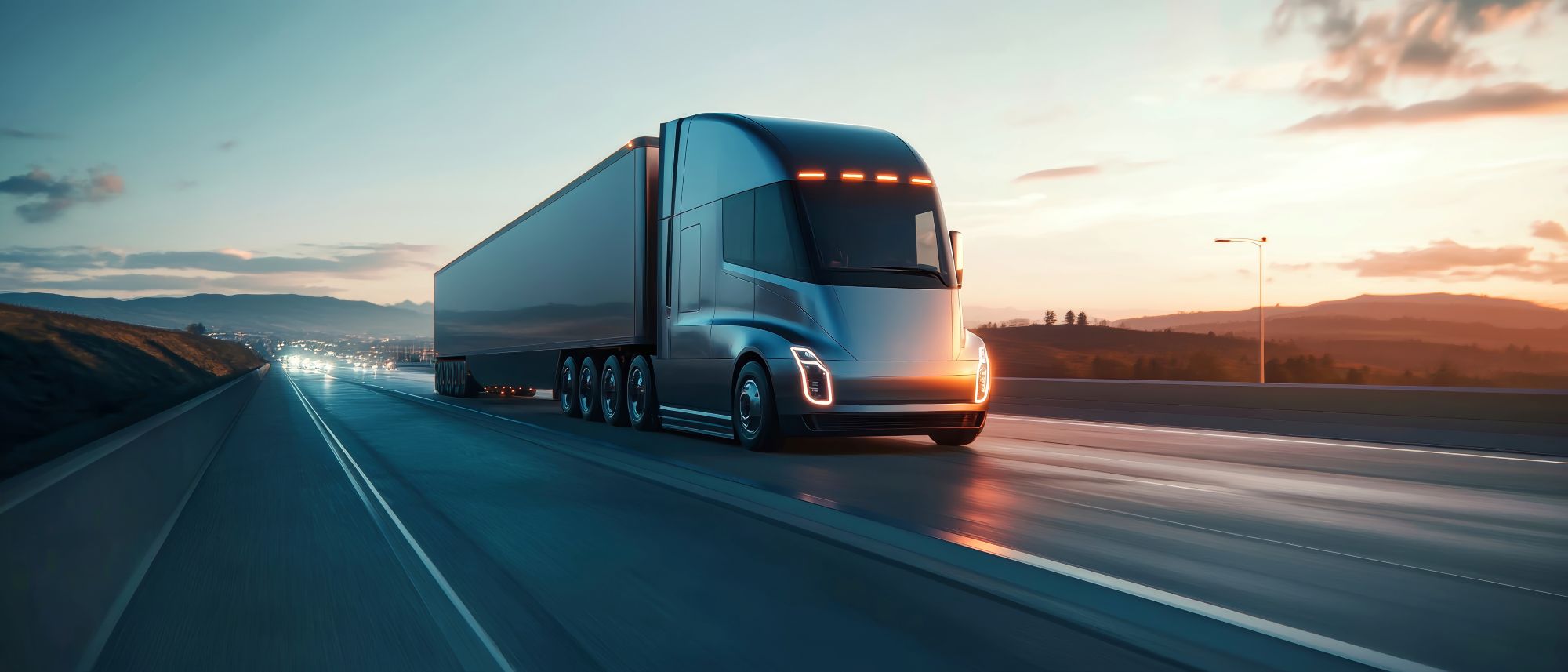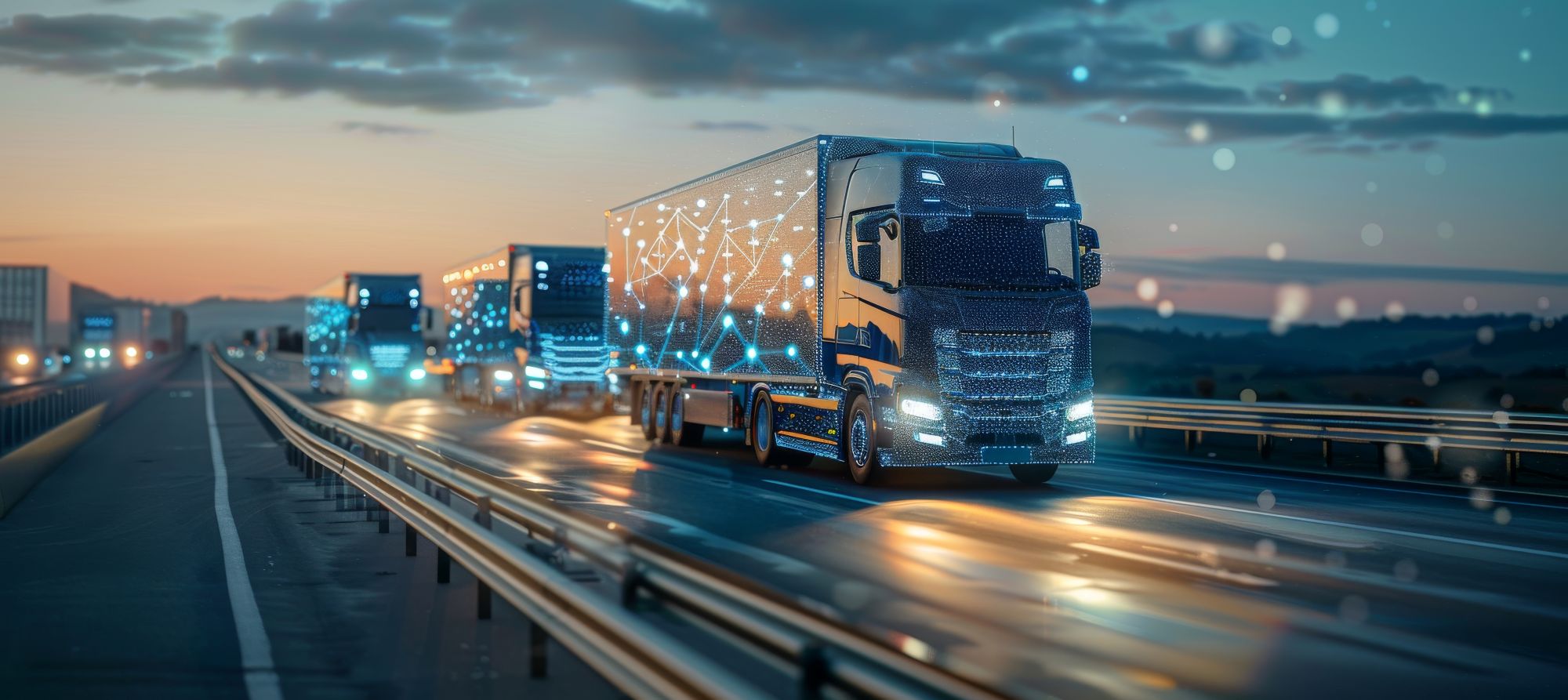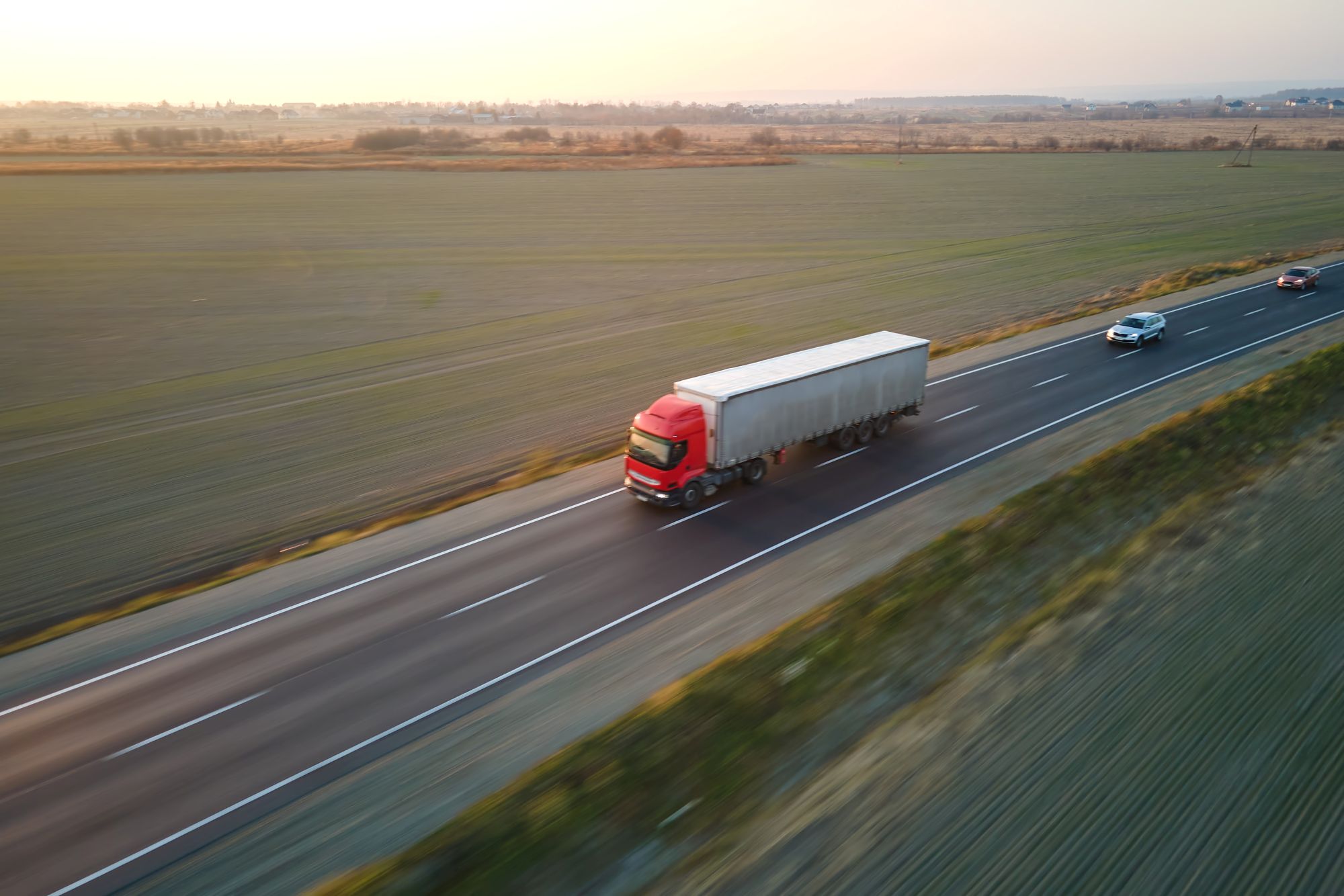
Guest
Prechádzajú vozové parky na integráciu autonómnych vozidiel?
Vytvorené: 28. 08. 2025
•
Aktualizované: 28. 08. 2025
Hluk okolo samojazdiacich vozidiel už nie je taký hlasný ako kedysi, ale manažérom vozových parkov stále znie v ušiach. Vláda Spojeného kráľovstva presunula pilotné plány integrácie autonómnych vozidiel na rok 2026, čím obnovila záujem o túto technológiu. Budú vedúci pracovníci s rozhodovacími právomocami ignorovať tento hluk, alebo prijmú skoré prijatie?
Čo zahŕňa integrácia autonómnych vozidiel?
Integrácia autonómnych vozidiel zahŕňa zabudovanie samojazdiacich technológií, ako je umelá inteligencia, detekcia svetla a dosahu (LiDAR) a kamery s vysokým rozlíšením, do komerčných vozových parkov. V širšom meradle zahŕňa zavedenie samojazdiacich vozidiel do existujúcich systémov verejnej dopravy.
Medzi asistenčné systémy vodiča patrí systém predchádzania kolíziám, automatické prispôsobenie rýchlosti, riadenie jazdných pruhov, adaptívny tempomat a inteligentná jazda. Čiastočná a podmienená automatizácia využíva pokročilejšie technológie, ktoré za určitých okolností umožňujú ovládanie bez použitia rúk.
Automatizácia na úrovni 4 a 5 je pre výrobcov automobilov najvyššou prioritou, ale je náročné ju zaviesť do praxe, pretože inžinieri musia zohľadniť nespočetné množstvo okrajových prípadov. Dokonca aj s pokročilou umelou inteligenciou môže byť ťažké zdokonaliť parkovanie a zabrániť kolíziám. Čo ak je značenie na chodníku sotva viditeľné alebo do cesty vbehne dieťa? Prijatie závisí od reakcie vozidla.
Prechádzajú vozové parky na integráciu autonómnych vozidiel?
Podľa Centra pre prepojené a autonómne vozidlá ministerka dopravy Heidi Alexanderová potvrdila, že britská vláda urýchli plány komerčných pilotov samojazdiacich vozidiel a zameria sa na jar 2026. Tento krok by mohol vytvoriť takmer 40 000 pracovných miest a do roku 2035 priniesť do britskej ekonomiky 42 miliárd libier.
Nová legislatíva tejto krajiny v oblasti automatizovaných vozidiel patrí medzi najprísnejšie na svete a vytvára predpoklady pre ich široké komerčné využitie. Jedinou zostávajúcou prekážkou je technologická vyspelosť.
Sascha Meyer, generálny riaditeľ nemeckej automobilovej technologickej spoločnosti MOIA, v rozhovore pre spoločnosť McKinsey & Company uviedol, že predvídať časový harmonogram integrácie autonómnych vozidiel je náročné. V roku 2016 sa jej podnik MOIA domnieval, že vozidlá bez vodiča sa rozšíria v celej Európe do roku 2021.
Odvtedy si Meyer uvedomil, že prijatie si vyžaduje navrhnutie celého ekosystému, nielen riadiacich funkcií. Podľa nového časového plánu sa samojazdiace vozidlá dostanú do európskych miest najskôr v roku 2030. Inžinieri v spoločnosti MOIA navrhujú prototyp tak, aby presahoval predpísané rezervy. Takto budú pripravené na komerčnú prevádzku po prijatí príslušných právnych predpisov.
Faktory, ktoré podporujú prijatie vozidiel bez vodiča
Dodávateľské, taxislužobné, komunálne a komerčné flotily zaznamenávajú nárast asistenčných systémov pre vodičov a inteligentnej automatizácie. Miera rozšírenia je však stále pomerne nízka, najmä vzhľadom na to, ako dlho táto technológia existuje. Aké sú ich plány v oblasti autonómie?
Zvýšenie efektivity je jedným z hlavných dôvodov, prečo manažéri vozových parkov využívajú automatizáciu. Na rozdiel od ľudí môžu dodávky bez vodiča pracovať nepretržite. Vďaka telematickým systémom môžu optimalizovať jazdu a minimalizovať čas nečinnosti s cieľom zvýšiť palivovú účinnosť a urýchliť cesty.
Umelá inteligencia je odolná voči ľudským chybám, eliminuje prudké brzdenie a rozptýlené riadenie. Nemôže sa unaviť a nemá mŕtve uhly. Tieto zlepšenia by mohli pomôcť znížiť počet kolízií a dopravných nehôd, čo môže zmierniť nákladné nároky na odškodnenie pracovníkov a potenciálne znížiť náklady na poistenie.
Ďalším faktorom je úspora nákladov. Na úrovni 4 a 5 môžu majitelia optimalizovať výdavky na pracovnú silu a kompenzovať nedostatok vodičov. Okrem toho môžu elektrické vozidlá bez vodiča s kapacitou na prepojenie vozidla so sieťou znížiť prevádzkové náklady o takmer 20 % počas 30 rokov, čo pomáha kompenzovať počiatočné investície.

Faktory, ktoré odďaľujú prijatie vozidiel bez vodiča
Okrem toho, že majitelia vozových parkov čakajú, kým technológia bez vodiča dospeje, odkladajú prijatie kvôli vysokým počiatočným nákladom. Zabudovanie LiDAR, AI a telematiky do každého nákladného vozidla je nákladné. Rovnako drahá je aj kúpa nových vozidiel namiesto ich modernizácie. Aj keby sa podarilo nájsť úspory nákladov, technológie sa rýchlo vyvíjajú - ich investície môžu rýchlo zastarať.
Ďalším problémom je bezpečnosť. Snímače s fotookom sú štandardnou výbavou väčšiny moderných garážových brán. Zabraňujú zatváraniu dverí na predmety, autá alebo ľudí a používajú sa v celom priemysle v autoumyvárňach a na montážnych linkách automobilov. Zatiaľ čo niektorí výrobcovia automobilov využívajú len kamerové systémy, inžinieri museli nájsť nové riešenia. V súčasnosti mnohí používajú LiDAR, globálne satelitné navigačné systémy a ultrazvukové senzory.
Aj tie najpokročilejšie systémy sú však omylné. Nestačí, aby automatizované vozidlá fungovali rovnako dobre ako ľudia - musia uspieť tam, kde ľudskí vodiči zlyhávajú.
Senzory existujú už roky, ale inžinieri ich ešte nezdokonalili. Môžu zlyhať v okrajových prípadoch alebo v neznámych scenároch. Vozidlá úrovne 3 fungujú len na vopred zmapovaných rozdelených diaľniciach za jasného počasia. Vzhľadom na to, že Spojené kráľovstvo v roku 2021 zažilo 150 dní so zrážkami, môžu byť príliš nespoľahlivé na prijatie v širokom meradle.
Ako sa Spojené kráľovstvo môže pripraviť na autonómne vozidlá
Integrácia autonómnych vozidiel síce postupuje pomaly, ale je na najlepšej ceste dosiahnuť svoj cieľ v nasledujúcom desaťročí. Podľa výskumu spoločnosti Goldman Sachs by až 10 % nových automobilov predávaných na celom svete mohlo byť do roku 2030 vozidlami tretej úrovne. Predpokladá, že podiel vozidiel úrovne 2, teda tých, ktoré si vyžadujú dohľad vodiča, sa zvýši z 20 % predaja v roku 2025 na 30 % v roku 2027.
Manažéri by mali zvážiť rozsah a náklady na integráciu autonómneho vozového parku, aby zistili, či je pre nich skoré prijatie vhodné. Pravdepodobne prinesie dlhodobé úspory, ale vyčkávanie môže byť výhodnejšie, pretože poskytuje čas na technologický pokrok. Ak analýza nákladov a prínosov nie je presvedčivá, mali by zvážiť postupnú modernizáciu podľa toho, ako budú vozidlá zlyhávať.
Tí, ktorí pristúpia k prijatiu, musia vypracovať zásady prevádzky, ukladania, bezpečnosti a aktualizácie. Tieto pravidlá by sa mali líšiť v závislosti od úrovne automatizácie. Napríklad od vodičov nákladných vozidiel úrovne 3 by sa malo vyžadovať, aby venovali plnú pozornosť ceste a v prípade potreby prevzali riadenie.
Pre úspešnú implementáciu je nevyhnutné vzdelávať zamestnancov o ich úlohe. Z výskumu spoločnosti Volkswagen Financial Services vyplynulo, že šesť z desiatich ľudí sa považuje za lepších vodičov ako autonómne vozidlá, takže je nepravdepodobné, že by preceňovali schopnosti systému bez vodiča. Napriek tomu by však mali absolvovať explicitné školenie o osvedčených postupoch a návykoch, ktorým sa treba vyhnúť.
Budúcnosť integrácie autonómnych vozových parkov v Spojenom kráľovstve
V prístavoch a skladoch po celej Európe usilovne pracujú samojazdiace stroje. Automatizácia diaľničných vozidiel je náročnejšia, pretože sa nenachádzajú na pevnej dráhe. Takisto musia zohľadňovať premenné, ako je počasie a iní motoristi. Geofencing, telematika a umelá inteligencia urýchľujú zavádzanie tým, že robia nepredvídateľné predvídateľným. Tieto riešenia prinajmenšom zlepšujú reakčné časy a zmierňujú ľudské chyby, čím dokazujú, že tieto predtým nevyskúšané technológie sú rovnako schopné ako ľudskí motoristi.
Úplná automatizácia, ktorá eliminuje potrebu ľudskej pozornosti, je zatiaľ len teoretická. Jazda bez použitia rúk je však realitou a systémy bez vodiča by sa čoskoro mohli stať štandardnou súčasťou komerčných vozových parkov. Keďže výrobcovia automobilov zdokonaľujú jazdné funkcie, majitelia vozových parkov by mali uprednostniť mapovanie trás, riadenie vodičov a plánovanie údržby.

Viac informácií nájdete v časopise Renovated Magazine.



